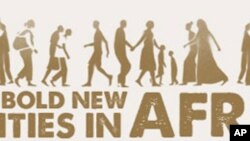Some of the world’s top economists have gotten together to take a new look at the HIV/AIDS epidemic and see whether money can be better spent. It’s called the RethinkHIV project and includes three Nobel Laureates.
The Copenhagen Consensus Center and the Rush Foundation sponsored the panel of experts, which presented its findings Wednesday in Washington to the Global Fund to Fight AIDS, Tuberculosis and Malaria.
“It’s essentially a project to try to say, let’s spend money on HIV in the smartest possible way,” said Dr. Bjorn Lomborg, director of the Copenhagen Consensus Center. “What we’re trying to say with some of the world’s top researchers – where can you get the most bang for your extra buck doing something about HIV in sub-Saharan Africa?”
The panel released its recommendations at a time when countries are struggling to cope with a global recession. Many, such as the United States, are cutting spending.
“We have this idea that HIV is something we fixed. And it’s true in the rich world, but it’s certainly not true in the developing world, especially in sub-Saharan Africa, which has by far the most incidents of HIV,” said Lomborg. “We have many, many good interventions where we can for very little money do a lot of good to tackle HIV.”
Why rethink HIV 30 years on?
The HIV/AIDS epidemic is now 30 years old and there have been recent advances in using antiretroviral drugs as a prevention measure. There’s also been more encouraging news about developing a vaccine, but that’s still believed to be many years away.
“We don’t actually have very good evidence for many of the things we’ve done in the past as to how much it costs compared to how many lives we save. And so what we tried to do was to get some of the world’s top economists in HIV, 31 of them in all, to look at what are the best policies. That is, where can you do the most good on HIV per dollar spent? And it’s in the rethink of the economics smartness, if you will, that we really have an edge here,” he said.
The panel’s picks
The panel of experts recommended that more money be spent on vaccine research, male circumcision programs and efforts to prevent mother-to-child transmission of HIV.
“They listened to all the experts tell them what are the best opportunities and then they rank all these opportunities,” Lomborg said. “And what they found was the very best thing you could do in the world is really to scale up the investment in vaccine funding.”
Current investment in vaccine research totals about $900 million.
“If we spend just a hundred million dollars more per year we could improve the time when it arrives by perhaps as much as two years. That would simply mean we could help eradicate or dramatically reduce the infection in just a couple of decades,” he said.
Lomborg said it’s important to understand the epidemic from a medical point of view.
“But what we add to the conversation is an economic viewpoint because it’s not enough to be able to treat and to heal or to avoid infections. You also need to look at what are the costs and benefits because some of the things we do are very costly sand only do a little good, whereas other things are very cheap and do an amazing amount of good.”
More information can be found at www.rethinkhiv.com.










